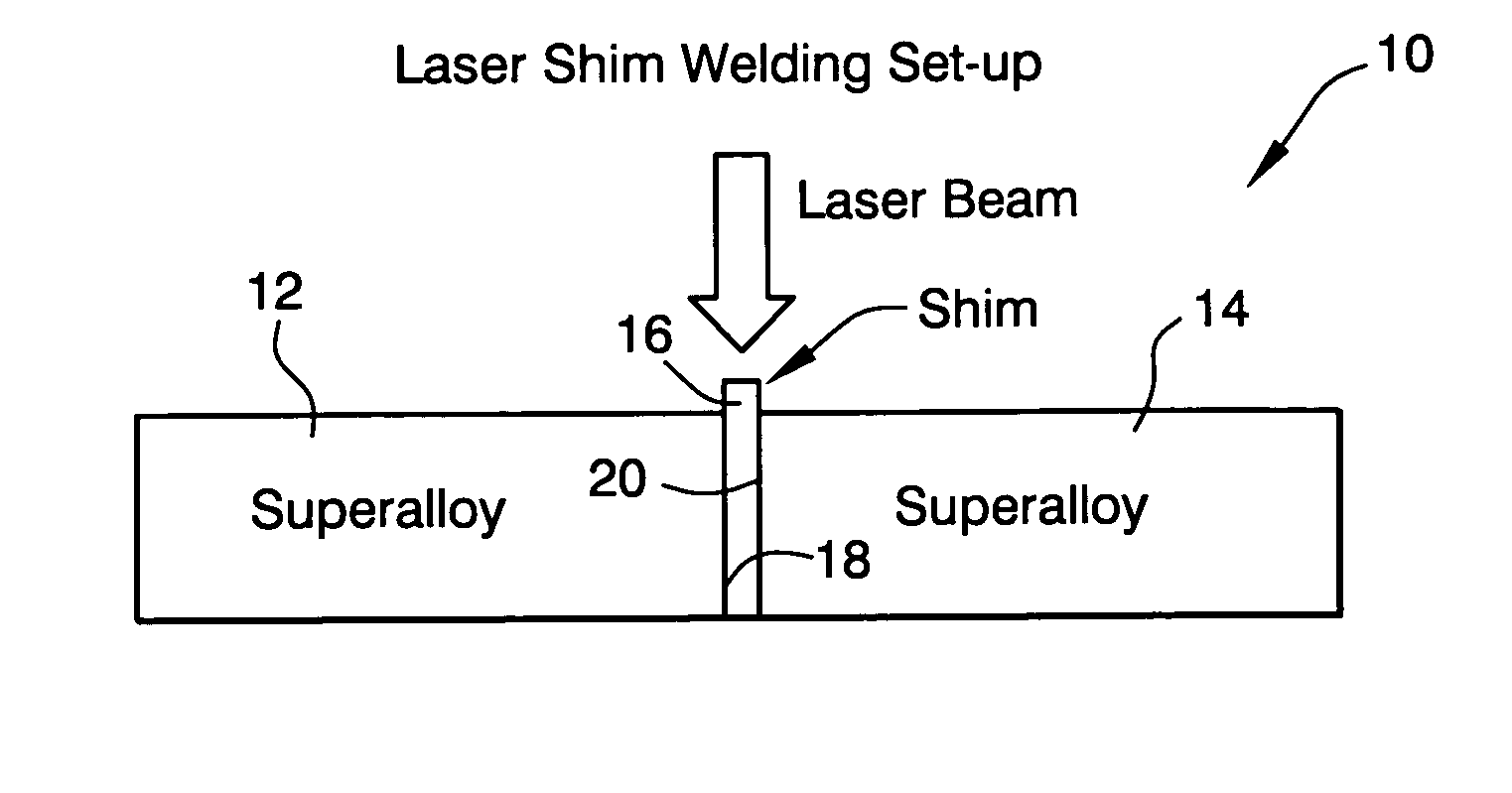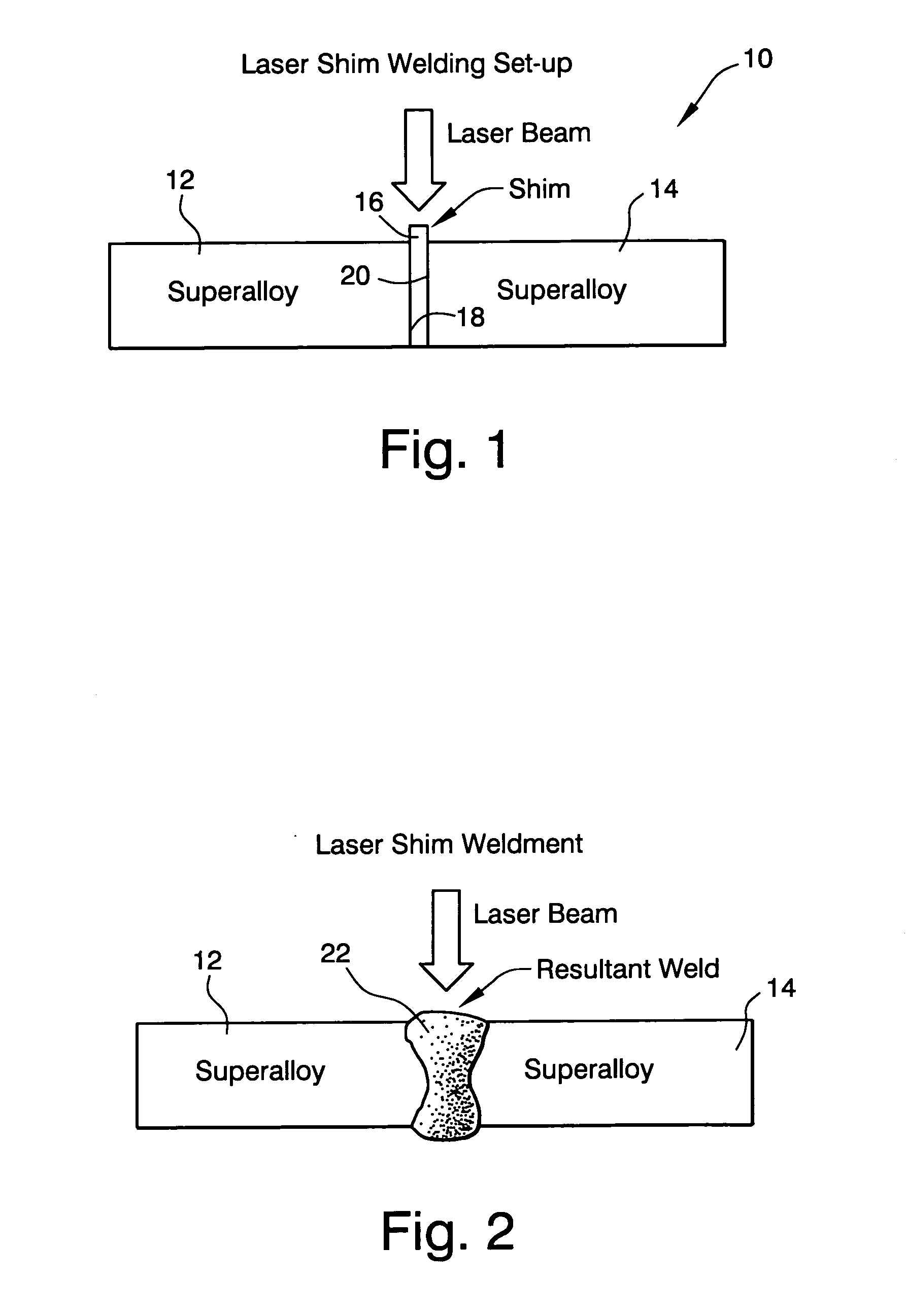Shimmed laser beam welding process for joining superalloys for gas turbine applications
a superalloy and laser beam welding technology, which is applied in the direction of turbines, manufacturing tools, machines/engines, etc., can solve the problems of crack-free weld joints, catastrophic failure of weld joints, poor fatigue strength, etc., to facilitate the development of defect-free superalloy weld joints, improve low cycle fatigue life, and high temperature
- Summary
- Abstract
- Description
- Claims
- Application Information
AI Technical Summary
Benefits of technology
Problems solved by technology
Method used
Image
Examples
Embodiment Construction
[0017] With reference to FIG. 1, a laser shim welding setup 10 includes a pair of coupons 12, 14 of a nickel-based superalloy (for example, GTD-222), with a shim 16 inserted between opposed faying surfaces 18, 20 located on either side of the nickel-based or cobalt-based shim 16. In the disclosed example, the shim 16 is between 0.010 and 0.040 inch thick, and note that the height of the shim extends about 0.10 to 0.150 inch over that of the joint depth, i.e., over the height or thickness of the coupons 12 and 14. The weld joint mock-ups are fit-up with weld joint gaps from 0 to 0.010 inch (between the shim 16 and faying surfaces 18, 20), and tack welded using a lower power setting with a laser beam. Spot tacks may be made every one half inch along the length of the joint.
[0018] In the disclosed example, the welding parameters used for the laser shim welding process may be as follows: [0019] Wattage: 1000-3500 [0020] Speed: 8 to 30 ipm (inches per minute) [0021] Focal Length: 7½ inc...
PUM
| Property | Measurement | Unit |
|---|---|---|
| thickness | aaaaa | aaaaa |
| Thickness | aaaaa | aaaaa |
| thickness | aaaaa | aaaaa |
Abstract
Description
Claims
Application Information
 Login to View More
Login to View More - R&D
- Intellectual Property
- Life Sciences
- Materials
- Tech Scout
- Unparalleled Data Quality
- Higher Quality Content
- 60% Fewer Hallucinations
Browse by: Latest US Patents, China's latest patents, Technical Efficacy Thesaurus, Application Domain, Technology Topic, Popular Technical Reports.
© 2025 PatSnap. All rights reserved.Legal|Privacy policy|Modern Slavery Act Transparency Statement|Sitemap|About US| Contact US: help@patsnap.com


